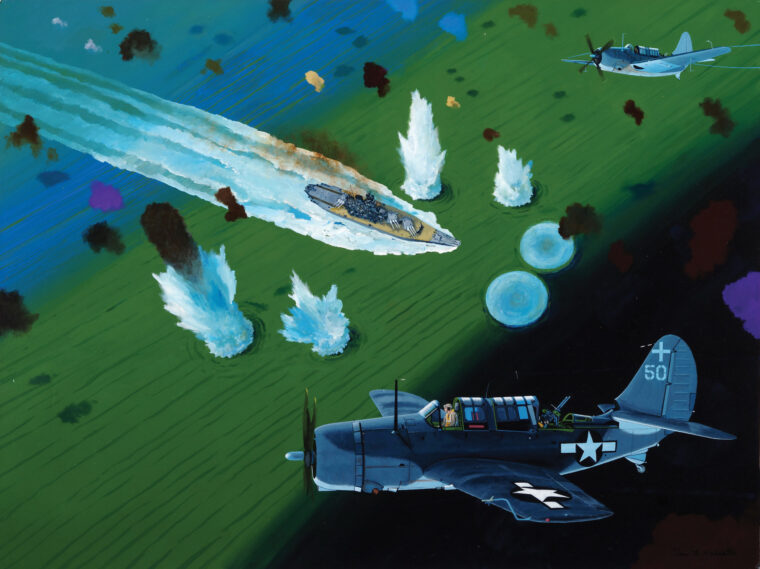
submarine
Battle of Sibuyan Sea
By John WukovitsIn warfare, desperate times call for desperate measures, and in the fall of 1944 the empire of Japan found itself in precisely that predicament. Read more

submarine
In warfare, desperate times call for desperate measures, and in the fall of 1944 the empire of Japan found itself in precisely that predicament. Read more
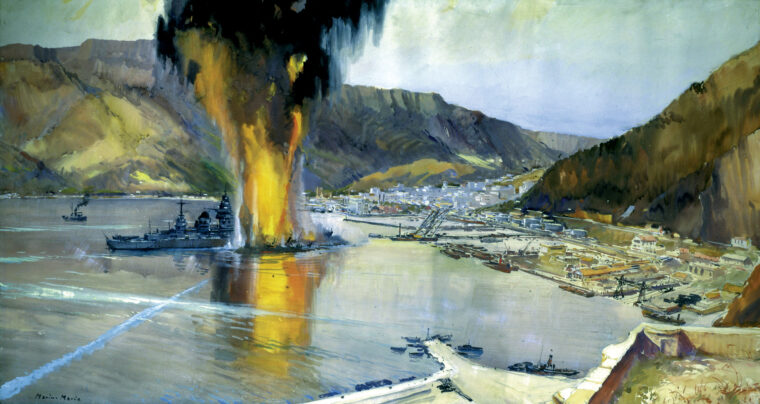
submarine
Steaming through the summer Mediterranean night, the world having gone sour in two awful months, British Vice Admiral Sir James Somerville read the message just sent to him from London: “You are charged with one of the most disagreeable and difficult tasks that a British Admiral has ever been faced with, but we have complete confidence in you and rely on you to carry it out relentlessly.” Read more
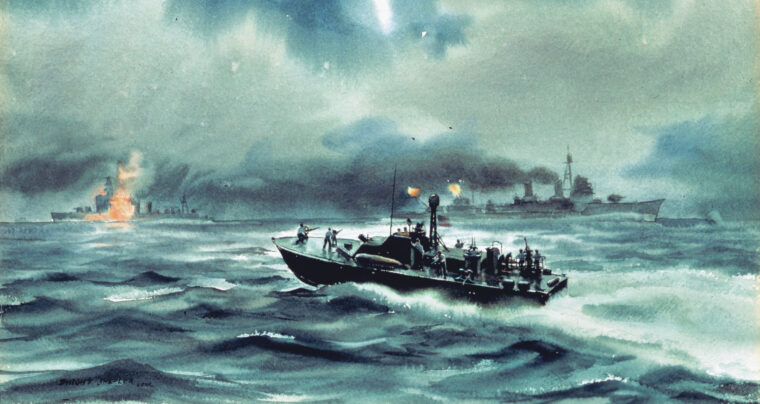
submarine
In 1944, following the American victories in the South Pacific of operational commanders General Douglas MacArthur in western New Guinea and Admiral Chester Nimitz in the Marianas, American planners considered the next offensive against Japan’s empire. Read more
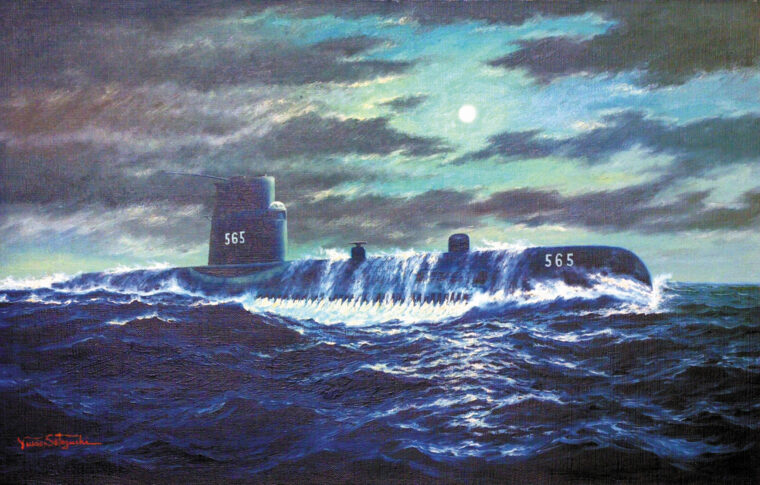
submarine
On the night of September 14, 1942, the men aboard the U.S. Navy submarine Wahoo spotted smoke rising from the funnel of a vessel emerging from Truk’s north pass. Read more

submarine
The world’s first combat submarine was something of an afterthought on the part of its creator. The revolutionary craft, known as the Turtle for its odd profile, was the progeny of David Bushnell, who was born in 1742 in West Saybrook, Conn. Read more
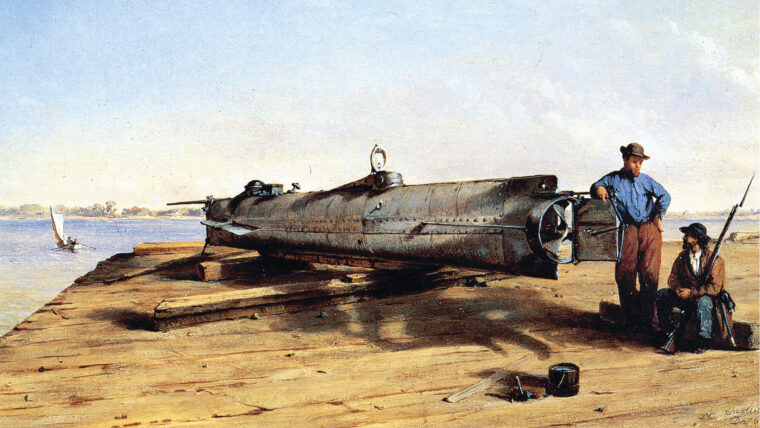
submarine
The concept of a ship that could submerge beneath the water and then resurface dates back as far as the late 1400s, when Italian Renaissance artist and inventor Leonardo da Vinci claimed to have found a method for a ship to remain submerged for a protracted period of time. Read more
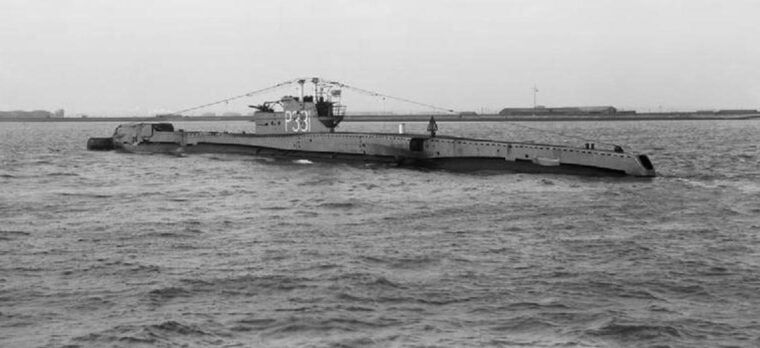
submarine
By Arnold Blumberg
After the Royal Navy’s traumatic departure from the Pacific Ocean in early 1942, the 4th Submarine Flotilla and its depot ship, the HMS Adamant, operated with the Eastern Fleet based at Trincomalee––a large, natural harbor located on the coast of Sri Lanka in the heart of the Indian Ocean. Read more

submarine
By Arnold Blumberg
During World War II, after the Royal Navy’s traumatic departure from the Pacific Ocean in early 1942, the 4th Submarine Flotilla and its depot ship, the HMS Adamant, operated with the Eastern Fleet based at Trincomalee––a large, natural harbor located on the coast of Sri Lanka in the heart of the Indian Ocean. Read more
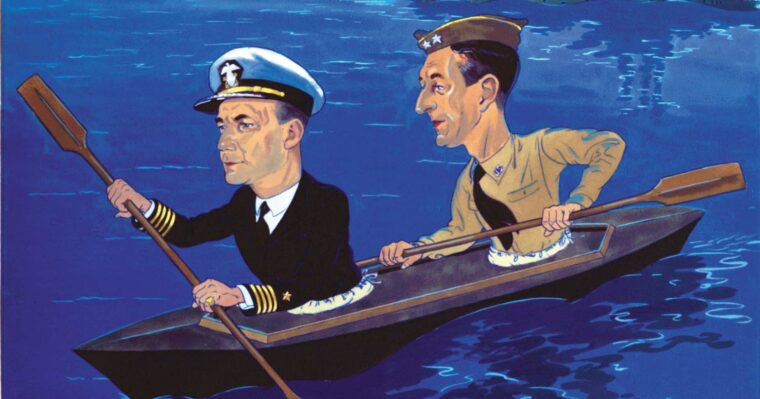
submarine
The five Americans were trapped in a small, dark, empty wine cellar in an isolated French villa on the coast of Algiers. Read more
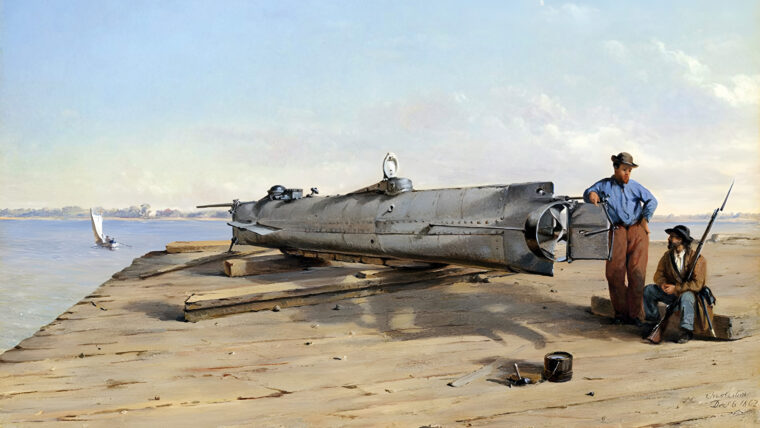
submarine
At the start of the American Civil War in April 1861, U.S. President Abraham Lincoln proclaimed that he planned to blockade the Confederacy by stationing warships in waters off its shores. Read more
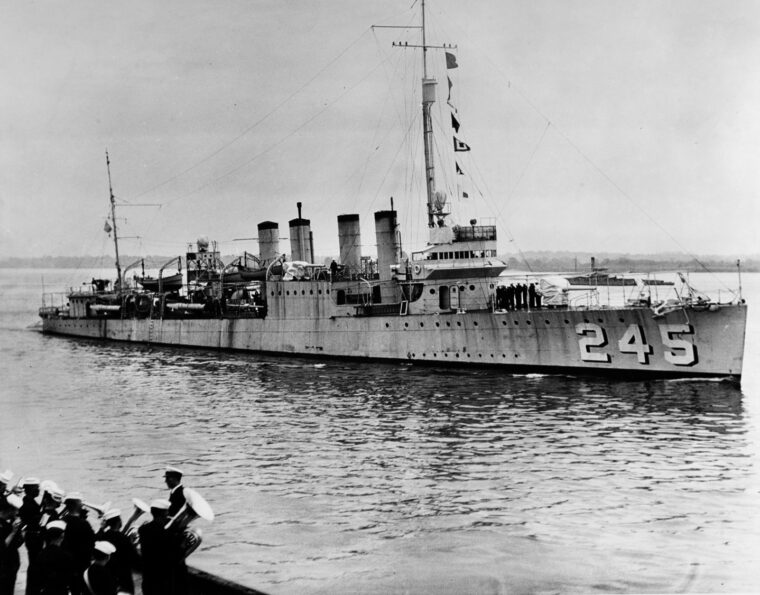
submarine
When the destroyer USS Reuben James (DD-245) was assigned to convoy duty in the North Atlantic in the autumn of 1941, its crew had a sense of foreboding and feared the worst. Read more
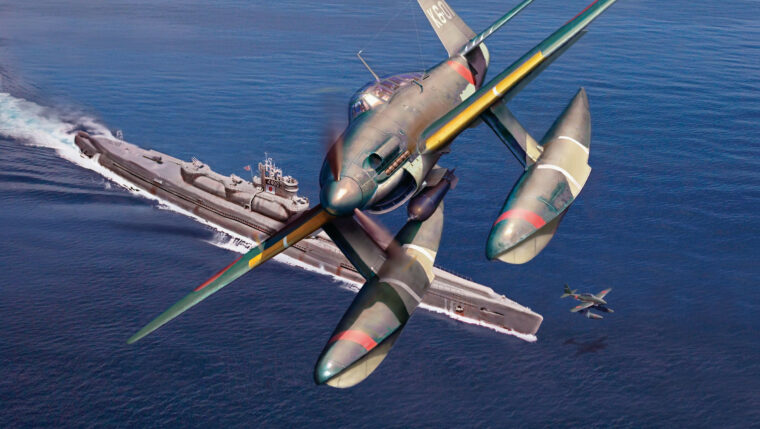
submarine
As soon as Colonel James Doolittle’s B-25 raid struck Japan in April 1942, Japan sought to wreak revenge on the United States, but by 1944 devastating aerial bombings on Japan by the Americans had become all too regular. Read more
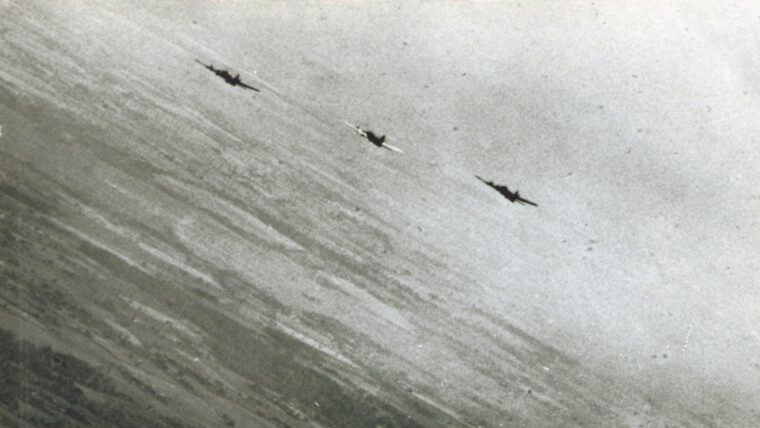
submarine
When it came to advanced military technology in World War II, arguably no one was better at it than Nazi Germany, whose scientists Adolf Hitler keep busy trying to invent the ultimate “super weapon” capable of defeating his enemies. Read more
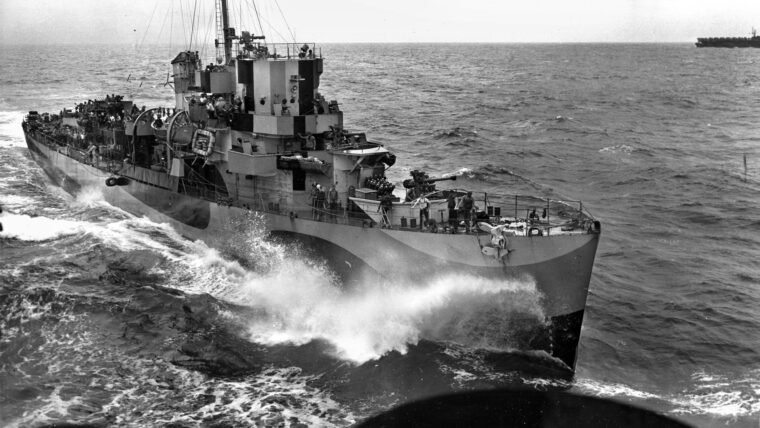
submarine
Admiral Soemu Toyoda needed answers. The newly appointed commander in chief of Japan’s Combined Fleet, Toyoda found himself facing several unpleasant facts. Read more
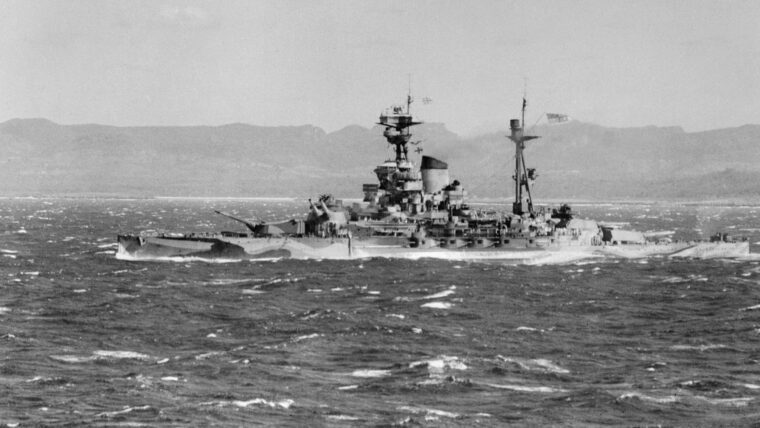
submarine
In early 1942 things could have hardly looked bleaker for the Allies. In Europe, Hitler’s war machine had steamrolled across the entire continent and was now battling before the gates of Moscow. Read more
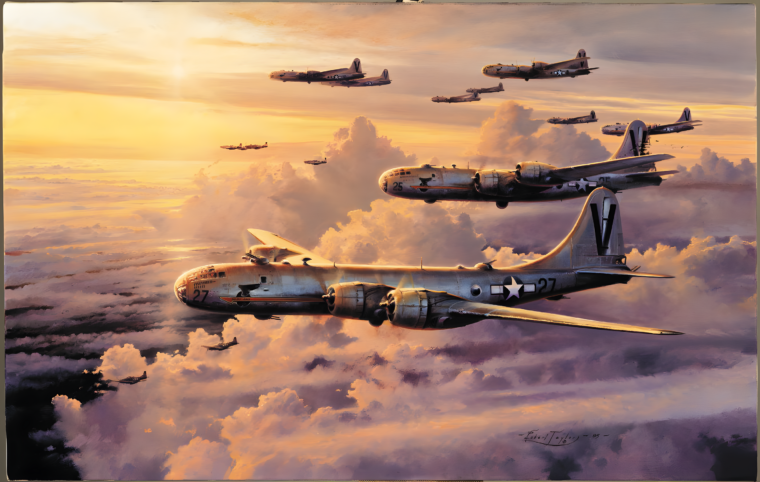
submarine
From an altitude of 30,000 feet, the swift Japanese reconnaissance aircraft flew high over Saipan and Tinian, photographing the brisk and extensive engineering effort under way on the American airfields far below. Read more
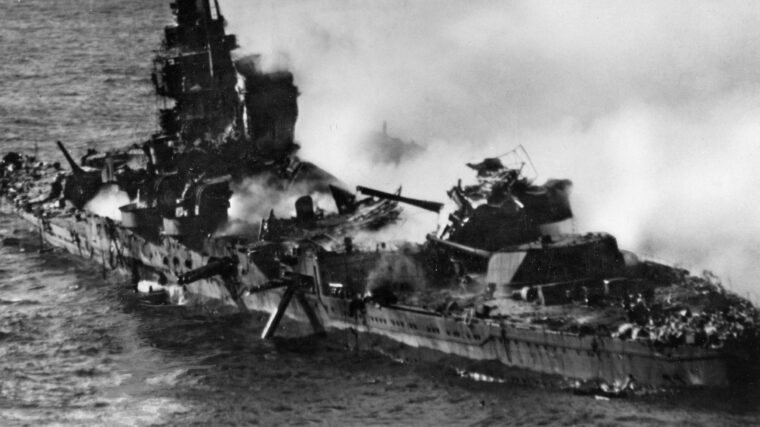
submarine
By Christmas 1941, Robert Hunt, torpedoman on the submarine USS Tambor, had witnessed the Japanese bombing of Wake Island, had slept in the Tambor’s forward torpedo room on the way back to Pearl with a bomb-induced leak bubbling in the corner, and had stood on his sub’s bow and seen the devastation of Battleship Row as debris in the oil-slicked harbor bumped against the hull. Read more
submarine
Three Months after the United States was plunged into World War II with the Japanese attack on Pearl Harbor, the nation was on edge. Read more
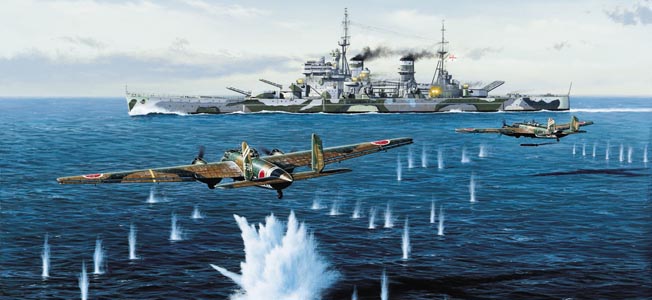
submarine
During the 1920s and 1930s Great Britain built up its Far East defenses steadily if slowly, centering around Singapore as its primary naval base in the Pacific area. Read more
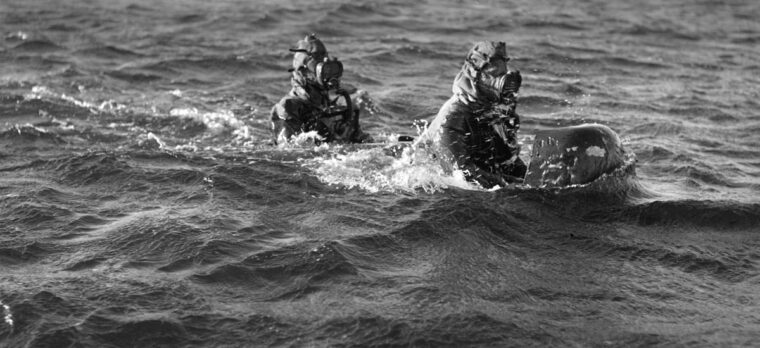
submarine
On a dark night in September 1941, moving at periscope depth, an Italian submarine edged into Gibraltar Bay near the British harbor. Read more